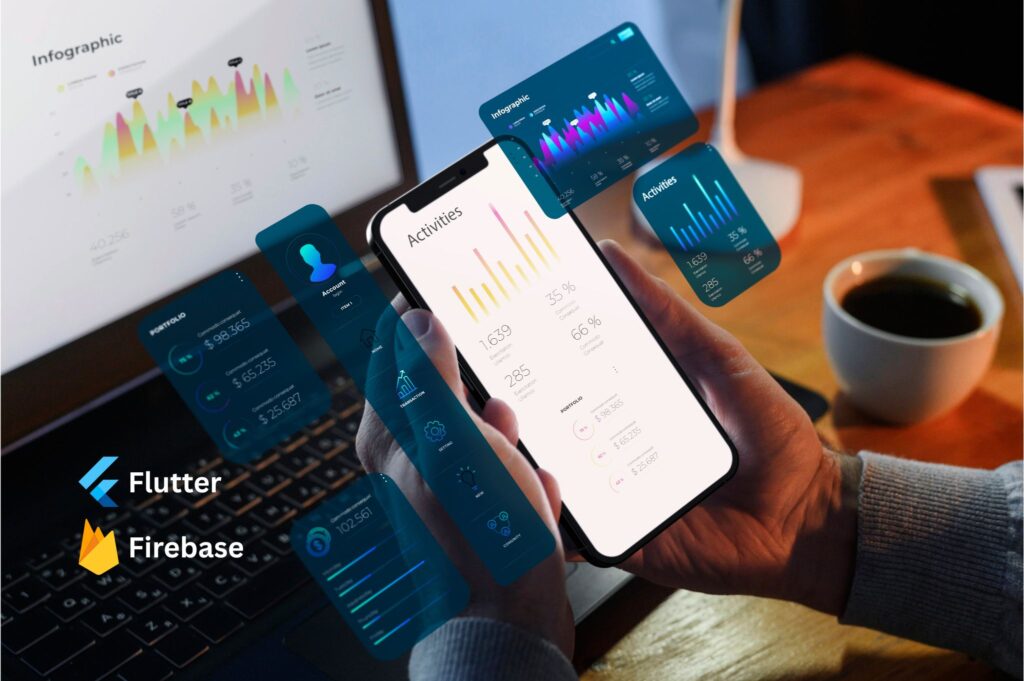Case Study
Home » Cross-Platform Deployment Strategy Using Flutter and Firebase
Cross-Platform Deployment Strategy Using Flutter and Firebase
Problem Statement
A startup in the education technology (EdTech) sector aimed to launch a mobile application for interactive learning across Android, iOS, and web platforms. However, managing separate codebases and deployment pipelines for each platform created inconsistencies, high maintenance costs, and longer release cycles. The challenge was to adopt a unified cross-platform deployment strategy to streamline development and delivery without compromising on user experience or performance.

Challenge
Fragmented Codebases: Multiple development teams managing Android, iOS, and web versions separately.
Delayed Feature Rollouts: Features were released at different times across platforms, causing UX and versioning issues.
High Maintenance Overhead: Bug fixes and UI updates had to be done individually for each platform.
Scalability Concerns: Backend infrastructure lacked real-time sync and was difficult to scale during high-usage periods like exams.
Manual Deployment: CI/CD was not automated, leading to longer QA cycles and late-night pushes.
Solution Provided
A cross-platform solution was built using Flutter for frontend development and Firebase as the backend-as-a-service (BaaS) platform. This unified tech stack enabled rapid development, deployment, and real-time syncing across all devices.
Key solutions included:
Flutter-Based UI Development: A single codebase to build beautiful, native-like apps for Android, iOS, and Web.
Firebase Integration: Utilized Firebase Authentication, Firestore, Cloud Functions, and Crashlytics.
CI/CD Setup: GitHub Actions used to automate builds, testing, and deployments to Google Play and Apple TestFlight.
Real-Time Database Sync: Firestore’s real-time listeners kept all platforms in sync instantly.
Progressive Web App (PWA): Enabled the web version to be installable and usable offline like a native app.
Development Steps

Data Collection
Deployed cameras and IoT sensors on retail shelves to collect data on product presence, weight, and positioning.

Preprocessing
Developed reusable components, adaptive layouts, and responsive design principles.

Firebase Backend Configuration
Set up Firestore for real-time data, Firebase Auth for secure login, and Cloud Functions for server-side logic.

CI/CD Pipeline Configuration
Integrated GitHub Actions to automate testing, building, and deployment for Android, iOS, and Web.

Testing Across Platforms
Ran automated widget and integration tests, and tested builds on emulators and physical devices.

Deployment & Monitoring
Released apps on Google Play, TestFlight, and Web. Integrated Firebase Crashlytics and Google Analytics for performance tracking.
Results

60% Faster Time-to-Market
Releasing all platform versions simultaneously accelerated the go-live timeline.

Reduced Maintenance Effort by 50%
A single codebase drastically cut down the time required for bug fixing and feature updates.

30% Lower Development Cost
Unified tech stack led to savings in developer hours and third-party services.

Real-Time Data Synchronization
Live quizzes, chats, and progress updates stayed in sync across all platforms without lags.

Improved User Engagement
User satisfaction increased due to faster updates, smoother performance, and consistent UX.